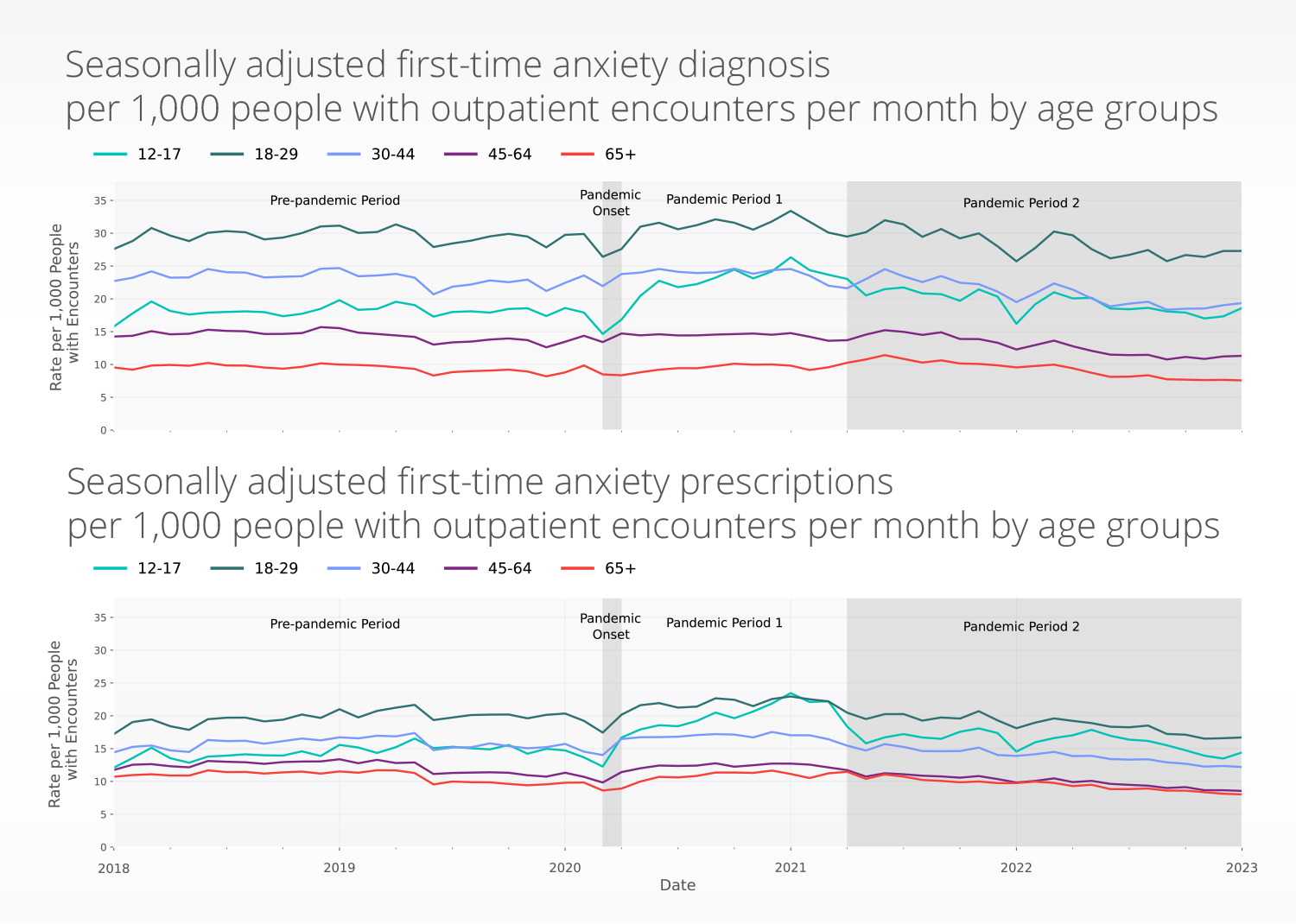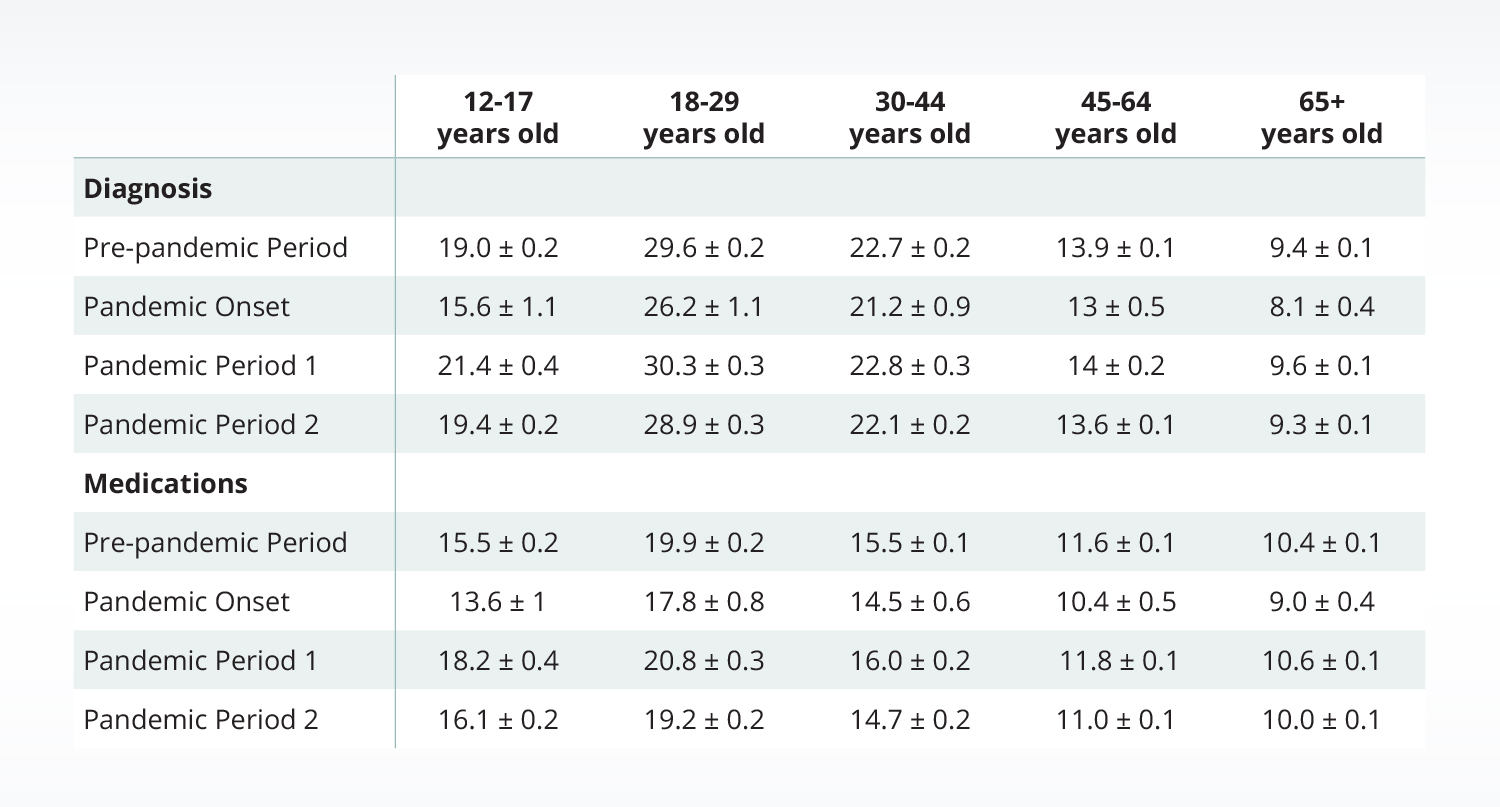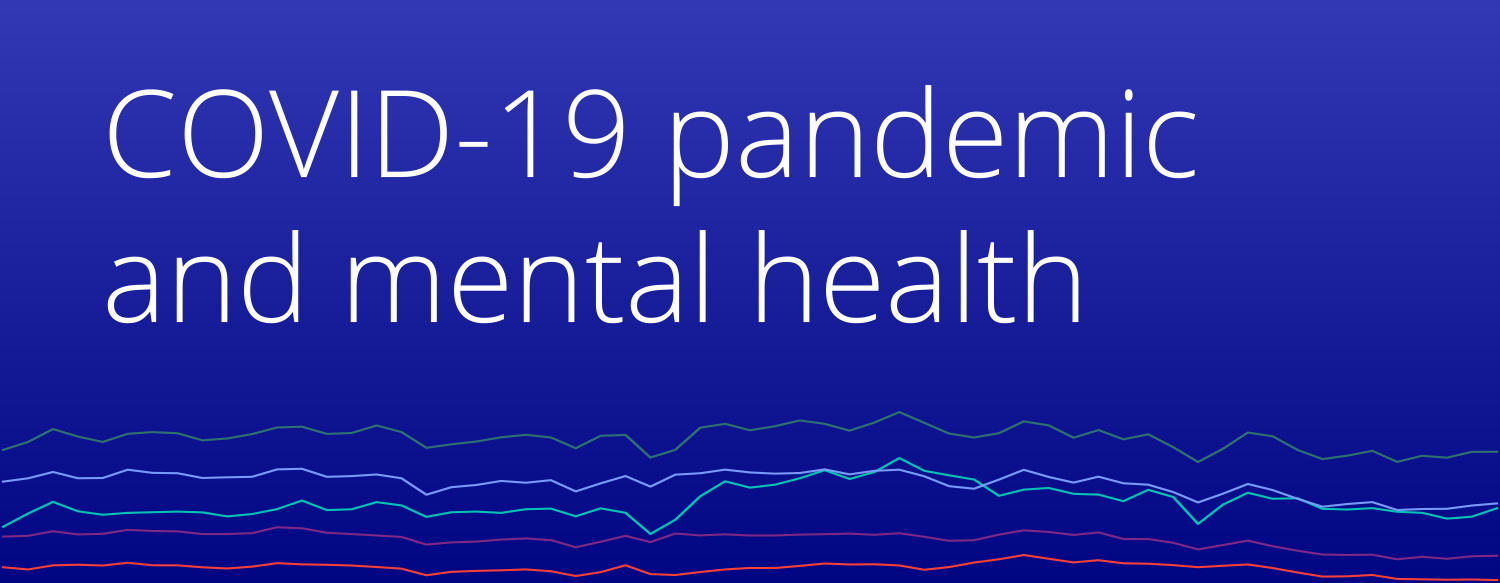- Truveta Research explored whether the rates of first-time anxiety diagnoses or first-time anxiety-related prescriptions were higher during the COVID-19 pandemic compared to the pre-pandemic era.
- We found that – with the brief exception of early 2021 – the rate of first-time anxiety diagnoses and prescriptions was highest for the 18-29-year-old age group.
- For the 12–17-year-old age group, we observed a significant increase in first-time anxiety diagnoses from pre-pandemic to pandemic period 1 (April 2020 to March 2021).
- First-time anxiety prescriptions also increased for 18–29-year-olds, from pre-pandemic compared to both pandemic periods 1 and 2. First-time diagnoses did not increase during either pandemic period compared with the pre-pandemic period for the 18–29-year-old age group.
- We did not observe other significant increases in prescription or diagnosis rates when comparing the pandemic periods to the pre-pandemic periods for any group older than 29 years of age.
To investigate whether the rates of new anxiety diagnoses or the prescription of anxiety medications were higher during the COVID-19 pandemic compared to the pre-pandemic era, Truveta Research has created a pre-print exploring these trends. As a part of this pre-print, we also sought to identify any significant variations in trends related to first-time diagnoses or prescriptions within distinct age groups. Because Truveta Data provides the most complete, timely, and clean de-identified EHR data from more than 30 health systems providing 18% of daily care in the US, Truveta Research was able to conduct a comparative analysis using data collected before and during the pandemic.
This blog provides a snapshot of the key findings in the pre-print. For the full analysis – inclusive of methodology, all findings, discussion, and limitations – you can view the complete findings on MedRxiv.
Methods
We calculated the 1) rate of first-time diagnosis per patients with outpatient encounters within each month who had not previous had an anxiety diagnosis, and 2) the rate of first-time anxiety prescriptions per patients with outpatient encounters within each month who had not previous received an anxiety prescription. The analyses were conducted independently. We used this as a method to estimate the rate of diagnosis or prescription amongst people who are seeking care. We stratified our population by age (12-17, 18-29, 30-44, 45-64, and 65+) and analyzed each age group independently. We then adjusted for seasonality in the data using the Seasonal-Trend decomposition; all graphs are seasonally adjusted and are comprised of the trend and residual components of the time series.
We compared four time periods to test for differences 1) pre-pandemic: January 2018 – February 2020, 2) pandemic onset: March 2020, 3) pandemic period 1: April 2020 – March 2021, and 4) pandemic period 2: April 2021 – January 2023. We allowed the initial pandemic period to have a different effect than the other two pandemic time periods because of the expected difference in healthcare-seeking patterns during March 2020 compared with other months. We fit a linear regression model to the seasonally adjusted data and compared the difference in marginal means between the four time periods.
Results
In evaluating each age group, we found that – with the brief exception of early 2021 – the rate of first-time anxiety diagnoses and prescriptions was highest for the 18-29-year-old age group. Before the pandemic, the 30-44-year-old age group had the second highest rates of both anxiety diagnoses and prescriptions. However, after March 2020, the 12-17-year-old age group had a consistently higher first-time anxiety-related prescription rate and occasionally a higher first-time diagnosis rate when compared to the 30-44-year-old age group. The figures below show these trends across four time periods: 1) pre-pandemic period: January 2018 – February 2020, 2) pandemic onset: March 2020, 3) pandemic period 1: April 2020-March 2021, 4) pandemic period 2: April 2021 – January 2023.


Discussion
You can find more details in the full pre-print on MedRxiv.

